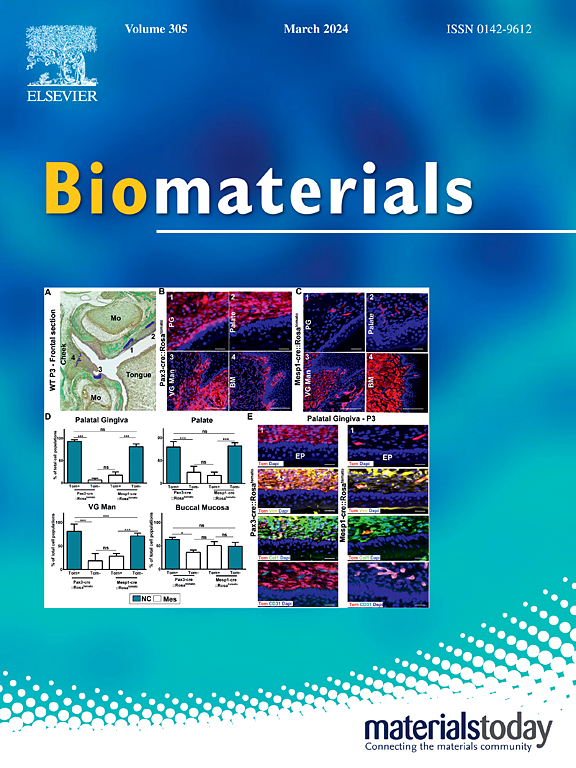Exosome-capturing scaffold promotes endogenous bone regeneration through neutrophil-derived exosomes by enhancing fast vascularization
IF 12.8
1区 医学
Q1 ENGINEERING, BIOMEDICAL
引用次数: 0
Abstract
Exosomes (Exos), extracellular vesicles of endosomal origin, are a promising therapeutic platform for tissue regeneration. In the current study, an exosome-capturing scaffold (ECS) was designed to attract and anchor exosomes via electrostatic adherence followed by lipophilic interactions. Our findings demonstrate that local enrichment of exosomes in the ECS implanted into critical mandibular defects could significantly accelerate endogenous bone regeneration by enhancing vascularization at the defect site. Notably, neutrophil (PMN)-derived exosomes (PMN-Exos) were identified as the predominant exosome subtype among all captured exosomes. During endogenous bone regeneration, PMN-Exos promoted endogenous vascularization primarily by stimulating the proliferation of endothelial progenitor cells (EPCs), which play a pivotal role in the vasculogenesis of new blood vessels. Mechanistically, vascularization involved PMN-Exo-derived miR455-3p, which promotes EPC proliferation by targeting the Smad4 pathway. In conclusion, this study offers an ECS with broad application prospects for enhancing tissue regeneration by accelerating vascularization. The elucidation of underlying mechanisms paves the way for developing novel strategies to regenerate various tissues and organs.
求助全文
约1分钟内获得全文
求助全文
来源期刊

Biomaterials
工程技术-材料科学:生物材料
CiteScore
26.00
自引率
2.90%
发文量
565
审稿时长
46 days
期刊介绍:
Biomaterials is an international journal covering the science and clinical application of biomaterials. A biomaterial is now defined as a substance that has been engineered to take a form which, alone or as part of a complex system, is used to direct, by control of interactions with components of living systems, the course of any therapeutic or diagnostic procedure. It is the aim of the journal to provide a peer-reviewed forum for the publication of original papers and authoritative review and opinion papers dealing with the most important issues facing the use of biomaterials in clinical practice. The scope of the journal covers the wide range of physical, biological and chemical sciences that underpin the design of biomaterials and the clinical disciplines in which they are used. These sciences include polymer synthesis and characterization, drug and gene vector design, the biology of the host response, immunology and toxicology and self assembly at the nanoscale. Clinical applications include the therapies of medical technology and regenerative medicine in all clinical disciplines, and diagnostic systems that reply on innovative contrast and sensing agents. The journal is relevant to areas such as cancer diagnosis and therapy, implantable devices, drug delivery systems, gene vectors, bionanotechnology and tissue engineering.
 求助内容:
求助内容: 应助结果提醒方式:
应助结果提醒方式:


